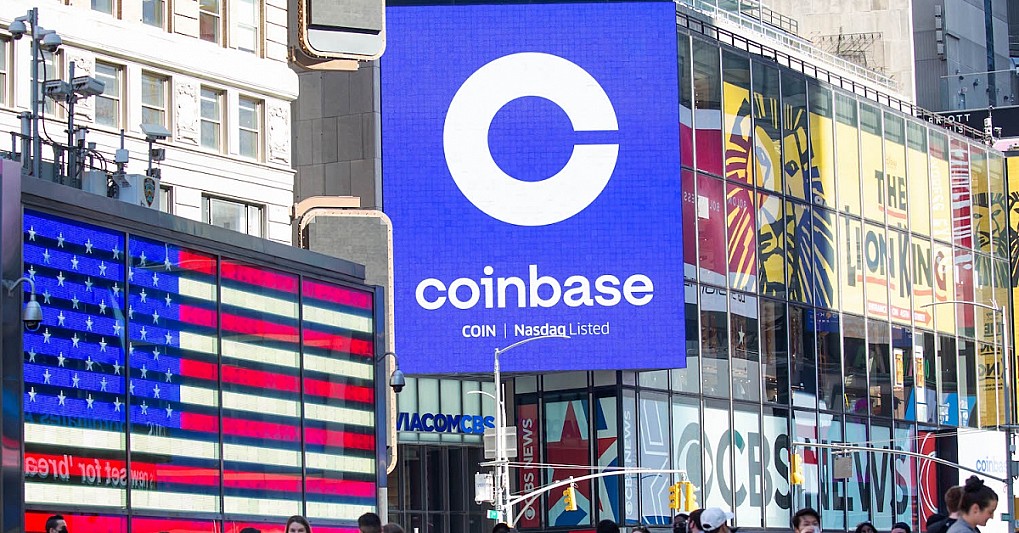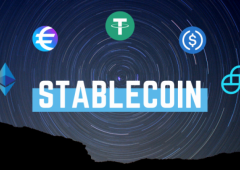Wall Street Welcomes Coinbase as It Enters the S&P 500
13.05.2025 14:00 2 min. read Alexander Stefanov
Coinbase is heading to the S&P 500, a landmark step that reflects both the company's financial evolution and Wall Street’s growing comfort with the crypto sector.
The exchange will replace Discover Financial Services on the index, marking a new level of legitimacy for digital asset firms.
The news drove COIN shares up 8% in after-hours trading, with the stock hovering around $226—still well off its 2021 high but showing strong year-to-date momentum. The inclusion comes after Coinbase posted a profitable first quarter with $527 million in adjusted net income and $2 billion in revenue.
Coinbase has faced an uneven path since going public in 2021, with its early valuation of $85 billion falling as the crypto market cooled. However, a string of profitable quarters and regulatory tailwinds under the Trump administration have revived investor interest.
The exchange recently made headlines with a $2.9 billion deal to acquire Deribit, a crypto derivatives platform. The move signals Coinbase’s intent to dominate not just spot trading, where it already leads in the U.S., but also derivatives—by far the largest slice of the global crypto market.
While competitors like Kraken and Gemini consider going public, and financial incumbents like Visa and PayPal expand crypto offerings, Coinbase’s S&P 500 inclusion places it in a class of its own. MicroStrategy, despite its large Bitcoin holdings, remains outside the index due to its smaller market cap.
As legacy finance and crypto converge, Coinbase’s entry into the S&P 500 cements its role as a bridge between two financial worlds once seen as irreconcilable.
-
1
U.S. Bank Advises Clients to Drop These Cryptocurrencies
29.06.2025 10:00 2 min. read -
2
Chinese Tech Firms Turn to Crypto for Treasury Diversification
26.06.2025 17:00 1 min. read -
3
What Are the Key Trends in European Consumer Payments for 2024?
29.06.2025 8:00 2 min. read -
4
FTX Halts Recovery Payments in 49 Countries: Here Is the List
04.07.2025 18:00 2 min. read -
5
What Brian Armstrong’s New Stats Reveal About Institutional Crypto Growth
29.06.2025 15:00 2 min. read
U.S. Public Pension Giant Boosts Palantir and Strategy Holdings in Q2
According to a report by Barron’s, the Ohio Public Employees Retirement System (OPERS) made notable adjustments to its portfolio in Q2 2025, significantly increasing exposure to Palantir and Strategy while cutting back on Lyft.
Key Crypto Events to Watch in the Next Months
As crypto markets gain momentum heading into the second half of 2025, a series of pivotal regulatory and macroeconomic events are poised to shape sentiment, liquidity, and price action across the space.
Here is Why Stablecoins Are Booming, According to Tether CEO
In a recent interview with Bankless, Tether CEO Paolo Ardoino shed light on the growing adoption of stablecoins like USDT, linking their rise to global economic instability and shifting generational dynamics.
U.S. Dollar Comes Onchain as GENIUS Act Ushers in Digital Era
In a statement that marks a major policy shift, U.S. Treasury Secretary Scott Bessent confirmed that blockchain technologies will play a central role in the future of American payments, with the U.S. dollar officially moving “onchain.”
-
1
U.S. Bank Advises Clients to Drop These Cryptocurrencies
29.06.2025 10:00 2 min. read -
2
Chinese Tech Firms Turn to Crypto for Treasury Diversification
26.06.2025 17:00 1 min. read -
3
What Are the Key Trends in European Consumer Payments for 2024?
29.06.2025 8:00 2 min. read -
4
FTX Halts Recovery Payments in 49 Countries: Here Is the List
04.07.2025 18:00 2 min. read -
5
What Brian Armstrong’s New Stats Reveal About Institutional Crypto Growth
29.06.2025 15:00 2 min. read


